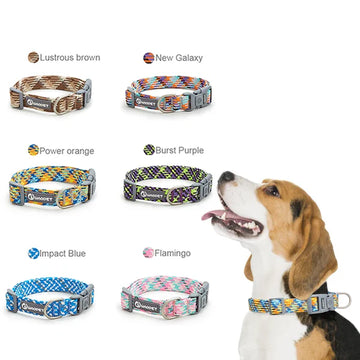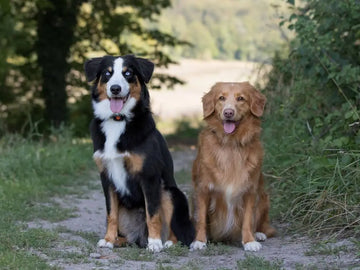Introducing your puppy to its first collar is a major milestone in their journey to becoming a well-trained, happy companion. While it might seem straightforward, this process can sometimes be challenging for both you and your furry friend. Puppies, being naturally curious and playful, may initially find collars restrictive or uncomfortable. However, with a structured approach, patience, and the right tools, your puppy will quickly adapt. By using positive reinforcement and high-quality best pet supplies, this task can turn into a bonding experience for both of you.
Why Is a Collar Important for Your Puppy?
A collar is more than just an accessory; it plays a crucial role in your puppy’s safety, training, and identification. Here’s why it’s indispensable:
- Identification: Should your puppy ever get lost, a collar with a tag makes it easy for others to identify them and contact you.
- Safety: A collar provides a secure way to attach a leash, ensuring control during walks or outings.
- Training Tool: Early use of collars helps prepare your puppy for leash training, which is a fundamental aspect of their growth.

Additionally, the right dog collars can serve as a statement of style and personality while keeping your puppy safe and secure.
Choosing the Best Puppy Collars
Selecting the right collar ensures comfort and minimizes the risk of irritation or harm. Consider the following factors:
- Material: Soft, lightweight options such as nylon or padded leather are ideal for young puppies. Avoid heavy or rigid materials that may feel restrictive.
- Size: Measure your puppy’s neck carefully and opt for a collar that fits snugly. A good fit allows two fingers to slide comfortably between the collar and your puppy’s neck.
- Adjustability: Puppies grow quickly, so choosing an adjustable collar ensures it will fit as they grow.
- Safety Features: Quick-release buckles or breakaway collars provide an extra layer of security, especially if your puppy gets caught on something.
By investing in the best puppy collars, you’re not only ensuring comfort but also laying the groundwork for effective training and safety.
Step-by-Step Guide to Help Your Puppy Get Used to a Collar
Step 1: Introduce the Collar Gradually
Before putting the collar on your puppy, allow them to sniff and examine it. Letting them become familiar with the object helps reduce initial fear or anxiety.
Step 2: Choose the Right Time
Introduce the collar during calm moments, such as after mealtime or playtime. Avoid doing this when your puppy is tired or overexcited, as they might resist more.
Step 3: Keep Initial Sessions Short
The first few times, leave the collar on for just a few minutes. Gradually increase the duration as your puppy starts getting used to the sensation.
Step 4: Reinforce Positively
Whenever your puppy wears the collar, reward them with treats, praise, or a favorite toy. Positive reinforcement creates a strong association between the collar and enjoyable experiences.
Step 5: Distract Your Puppy
Engage your puppy with their favorite toys or games during the first sessions. This distraction helps them forget about the collar and focus on something fun.
Step 6: Monitor for Comfort
Check the fit of the collar regularly to ensure it’s not too tight or causing any irritation. Puppies grow quickly, so you may need to adjust or replace the collar frequently.
Tips for Success
- Patience is Key: Some puppies adapt faster than others. Be patient and give your puppy time to adjust at their own pace.
- Avoid Punishment: If your puppy resists the collar, never scold or punish them. This can create negative associations and make the process harder.
- Consistency Matters: Regularly use the collar for short periods every day to build familiarity.
By incorporating the right tools, such as high-quality dog collars, you can ensure your puppy’s comfort and safety throughout the training process.
Addressing Common Challenges
What If My Puppy Scratches at the Collar?
It’s normal for puppies to scratch at something new on their necks. Distract them with play or treats, and they’ll soon forget about it.
What If My Puppy Resists the Collar?
If your puppy resists or becomes anxious, take a step back. Try introducing the collar again later, using plenty of positive reinforcement to build trust.
Outgrowing Collars Quickly
Puppies grow rapidly, and collars that fit one week may be tight the next. Regularly check the fit and replace or adjust the collar as needed.
From Collar to Leash Training
Once your puppy is comfortable wearing a collar, you can introduce a leash. Start with a lightweight leash and let your puppy drag it around under supervision. This helps them get used to the sensation of being tethered.
Over time, guide your puppy gently on short walks around your home or yard, rewarding them for calm and cooperative behavior. Using best pet supplies such as adjustable leashes and lightweight collars can make this transition smoother and more enjoyable for both of you.
Conclusion
Getting a puppy used to a collar is an essential part of their early training and development. By following the right steps, using positive reinforcement, and choosing the best puppy collars, you can ensure a smooth and enjoyable transition. A well-fitted collar not only helps with training but also keeps your puppy safe and identifiable at all times.
Remember, the key to success is patience, consistency, and making the experience enjoyable for your puppy. With high-quality dog collars and plenty of encouragement, your furry friend will soon see their collar as just another part of their exciting, adventure-filled life.









